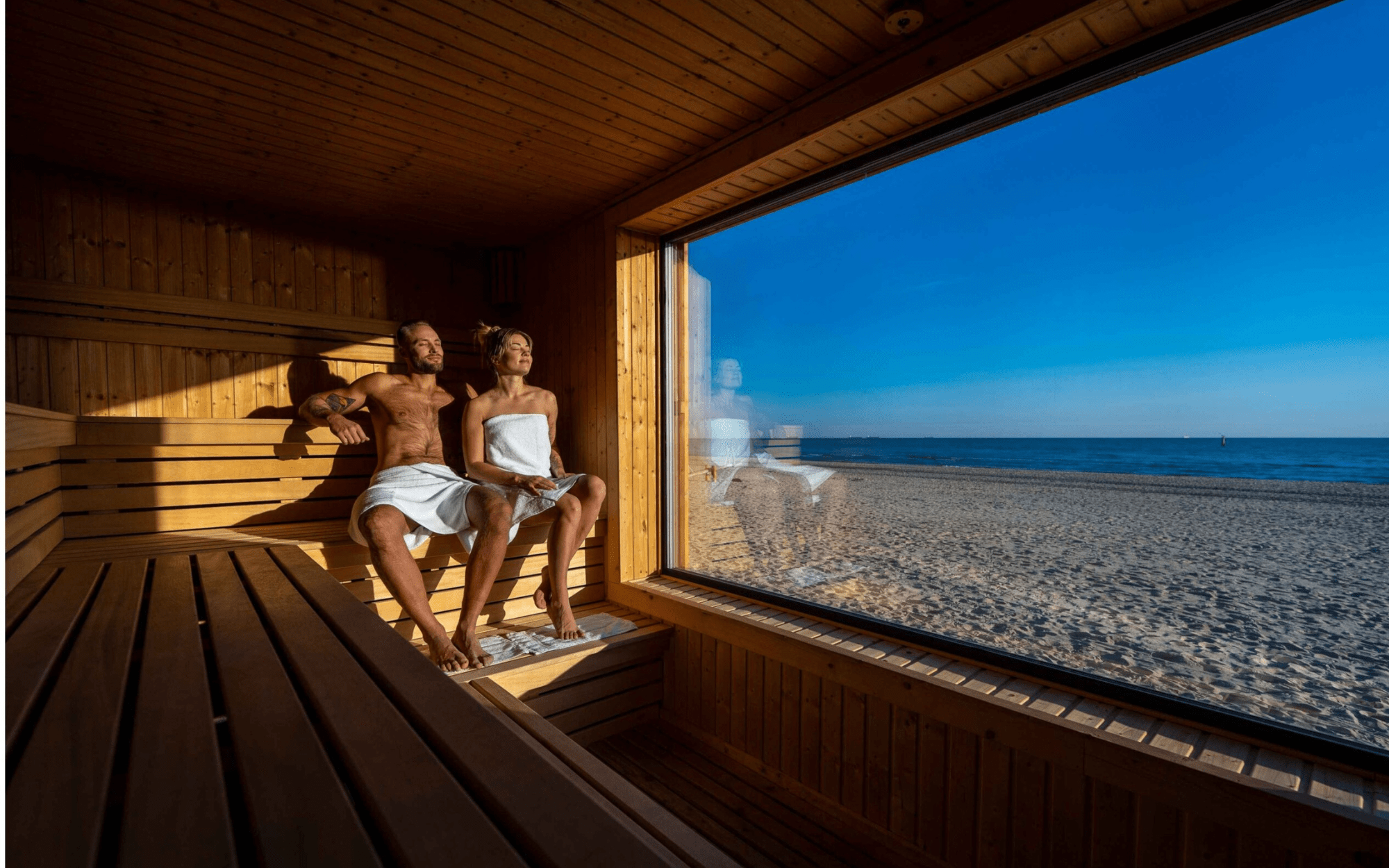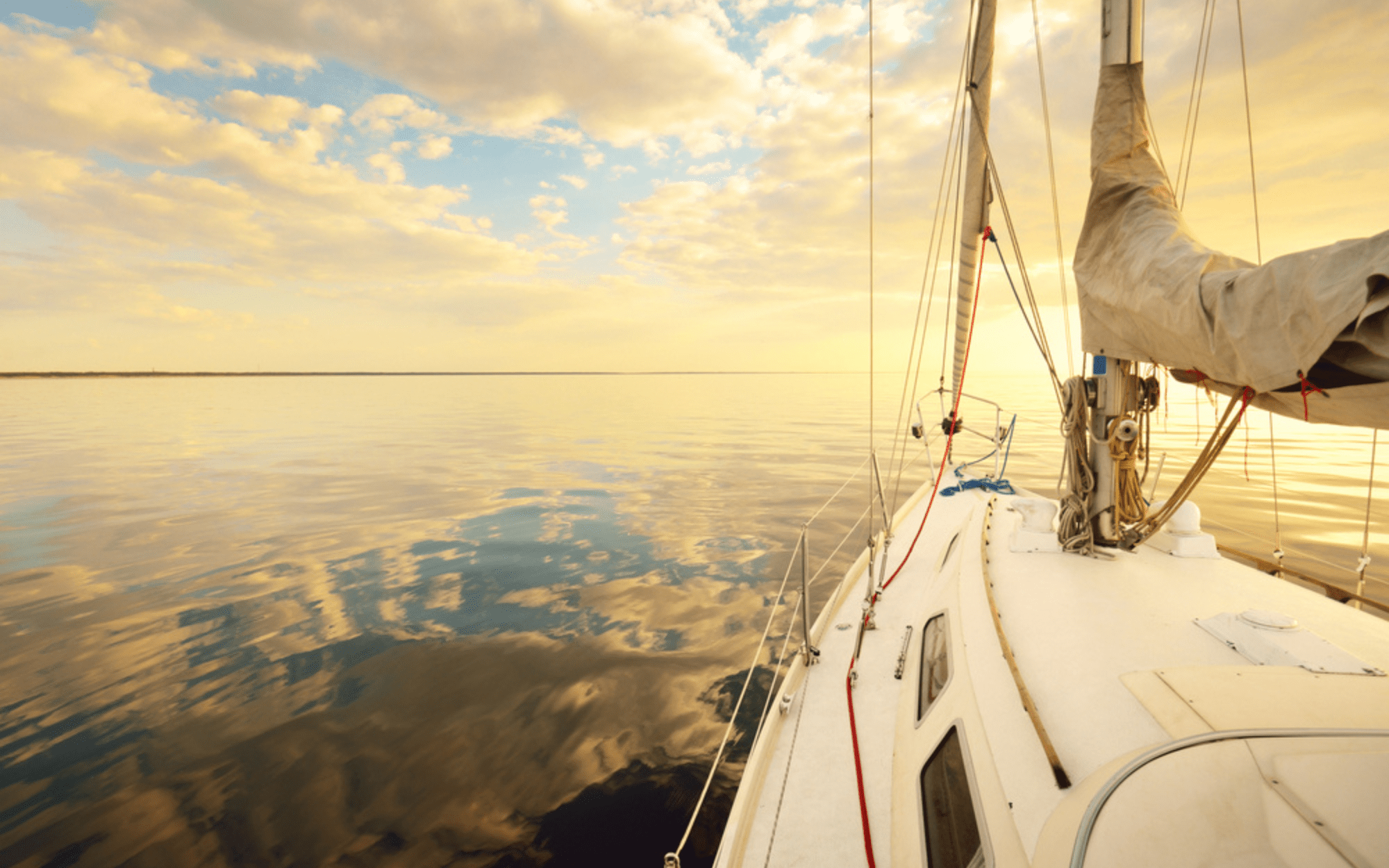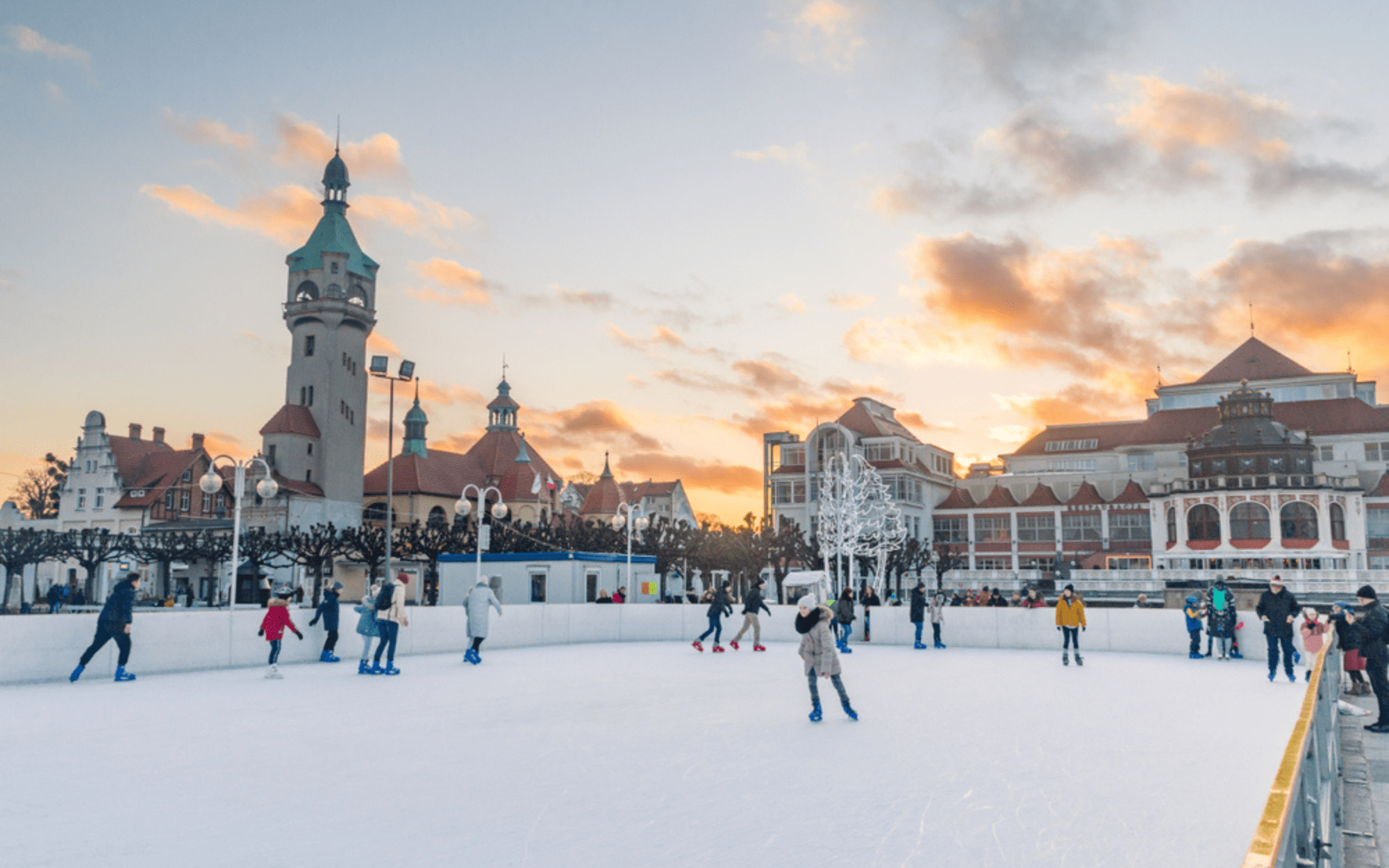Imagine strolling along a pristine Baltic shoreline, the famous wooden pier stretching into the sea before you, without having to navigate through crowds. Picture yourself relaxing in a steaming sauna perched right on the beach, then bracing for an invigorating dip in the cool Baltic waters – an experience uniquely available when summer crowds have departed.
This is Sopot in its low season, a time when this elegant Polish spa town reveals a more intimate, authentic character that many visitors never discover. Could this ‘off-season’ actually offer the most genuine way to experience the “Pearl of the Polish Coast”?
Unveiling Sopot’s Low Season: A Time of Tranquil Authenticity
For the discerning traveller seeking a more contemplative experience, Sopot’s low season (October through February, with some extension into March and April) presents a compelling alternative to its bustling summer months. While the high season from May to August sees thousands flocking to its 4.5km stretch of white sandy beaches and vibrant entertainment venues, the quieter months transform this Baltic gem into a haven of serenity and unhurried pleasure.
The primary allure lies in the remarkable shift in atmosphere. Without the summer crowds, Sopot’s elegant architecture, historic spa facilities, and natural beauty can be appreciated at a leisurely pace. The famous Bohaterów Monte Cassino street – affectionately known as “Monciak” by locals – retains its charm but offers a more relaxed ambience, allowing visitors to truly absorb the details of the iconic Crooked House (Krzywy Domek) and explore the artisan shops without jostling for space. Accommodation becomes more readily available, often at significantly reduced rates, and restaurant reservations, even at the town’s celebrated Michelin-recommended establishments, become much easier to secure.
The Climate Conundrum: Navigating Sopot’s Baltic Weather
It’s undeniable that Sopot’s low season brings cooler temperatures and more variable weather patterns than the summer months. October offers relatively mild conditions with temperatures reaching up to 10°C, though accompanied by an increasing likelihood of wind and rain. November sees further cooling to around 5°C, while the winter months of January and February hover around an average of 2°C, occasionally dipping to -5°C with the possibility of snow dusting the landscape.
However, this climate shift creates its own unique charm. The Baltic Sea takes on a dramatic character, with moody skies and impressive wave displays that photographers find irresistible. The cooler temperatures also provide the perfect excuse to experience Sopot’s spa heritage, a tradition dating back over 200 years. The town’s natural bromide and iodine mineral waters continue to flow through inhalation fountains and feed the wellness facilities that first established Sopot as a health destination. These therapeutic waters and treatments feel particularly restorative when enjoyed against the backdrop of a crisp Baltic day.
Winter Wellness: Sopot’s Unique Seasonal Offerings
The low season in Sopot brings exclusive experiences unavailable to summer visitors. Perhaps most notable are the beach saunas – the first of their kind in Poland – operating from October through April. These M15 saunas offer the extraordinary experience of warming in a traditional sauna with panoramic views of the Baltic Sea, followed by an invigorating dip in the sea itself. A practice embraced by a growing community of winter swimming enthusiasts. This contrast between heat and cold creates an exhilarating sensation that devotees describe as both physically and mentally rejuvenating.
From early December through February, Sopot installs the only ice-skating rink in Poland with a sea view, creating a magical winter activity backdrop that summer visitors can only dream of. The rink becomes a social hub for both locals and visitors, particularly enchanting when illuminated in the early winter dusk.
The Sopot Christmas Market, running from December 20th until January 7th, strategically opens as the larger market in neighboring Gdańsk concludes. This timing creates a perfect opportunity for visitors to experience both festive markets during an extended holiday stay. Sopot’s market, with its handcrafted goods, regional delicacies, and mulled wine, brings a warm glow to the winter season, all enhanced by the town’s tasteful illuminations.
Cultural Rhythms: Events and Festivals Beyond Summer
While summer boasts the famous Forest Opera performances, the low season offers its own cultural calendar. The Sopot Jazz Festival in October brings world-class musicians to intimate venues throughout the town, creating an atmosphere where music and architecture harmonize perfectly. The November celebration of St. Martin’s Day introduces visitors to the Polish tradition of goose feasting, with the town’s restaurants (including several recognized by the prestigious Michelin Guide) offering creative interpretations of this culinary custom.
For sports enthusiasts, the basketball season beginning in September provides an opportunity to support Trefl Sopot, the current Champions of Poland, in both domestic and European competitions. The energy of the local crowd offers insight into Polish sporting passion that summer tourists rarely encounter.
Immersing in Sopot’s Heritage: A More Personal Encounter
The low season provides a unique lens through which to appreciate Sopot’s architectural and cultural identity. Without summer crowds, visitors can take unhurried walks through the side streets to admire the characteristic spa town architecture which comprises a blend of elegant Art Nouveau villas, meticulously restored tenement houses, and grand hotels that speak to the town’s prestigious past as the “Riviera of the North.”
Every day at noon, the bugle call sounds from the top of Sopot’s lighthouse, a tradition easily missed in the summer bustle but forming a charming daily rhythm during quieter months. This small but significant cultural touchpoint exemplifies how the low season reveals Sopot’s authentic character, allowing visitors to sync with the town’s natural cadence rather than the accelerated pace of high tourist season.
The famous wooden pier (at 511 metres, the longest wooden pier in Europe) takes on a different character in the low season. From October 1st, entrance becomes free (compared to the 10 PLN fee charged during high season), democratizing this iconic experience. Winter storms occasionally create spectacular wave displays against the structure, while clear days offer expansive views across the Bay of Gdańsk that seem somehow more profound in the crystalline winter air.
Sustainable Journeys: Travelling with Purpose in Sopot’s Low Season
Visiting Sopot during the quieter months inherently supports a more sustainable approach to tourism. The reduced visitor numbers create less environmental pressure on the town’s natural resources and infrastructure, while still providing vital economic support to local businesses during what would traditionally be considered the “off” season.
The town’s compact nature makes it exceptionally walkable – a quality frequently noted with surprise by many first-time visitors. This pedestrian-friendly layout encourages exploration without vehicles, reducing the carbon footprint of your stay. For longer journeys, Sopot’s excellent integration into the Tri-City’s public transportation network provides sustainable mobility options connecting to Gdańsk and Gdynia.
Low season visitors can also take advantage of the cross-country ski trails that appear when snow conditions permit, offering another environmentally friendly way to explore the forested areas surrounding the town. These trails, combined with the possibility of skiing on Łysa Góra hill just 15 minutes from the city centre, create winter recreation opportunities with minimal environmental impact.
Culinary Consciousness: Sopot’s Seasonal Gastronomy
Sopot’s gastronomic scene embraces seasonality, with many restaurants adjusting their menus to feature the best local and regional produce available during the cooler months. The Baltic Sea provides different fish varieties throughout the year, and low season visitors can enjoy these seasonal catches prepared by skilled chefs who prioritize sustainable sourcing.
The town’s five Michelin Guide restaurants; Fisherman, Café Xander, 1911 Restaurant, L’Entre Villes, and Vinissimo, exemplify this commitment to quality and seasonality. Each offers a distinct interpretation of Polish and international cuisine, often highlighting preservation techniques like fermentation and curing that connect to traditional methods of extending the harvest through winter months.
Other notable establishments like Restauracja Bulaj and Bar Przystań (famous for its fish soup) similarly embrace the Baltic’s seasonal bounty. The latter’s signature soup becomes particularly appealing on crisp autumn or winter days, offering warming sustenance with authentic local flavor.
Low Season vs. High Season: Two Faces of Sopot
Comparing Sopot’s low and high seasons reveals two distinctly different experiences of the same location. The summer Sopot is vibrant, energetic, and social—beaches fill with sunbathers, the famous “Monciak” pedestrian street buzzes with activity until late hours, and the Forest Opera hosts international music festivals that animate the town.
The low season Sopot, by contrast, offers a more contemplative, authentic experience. The town returns to its residents, operating at a pace that feels more genuine and less performative. Visitors frequently comment on the surprising tranquility, the lower accommodation prices, and the pleasure of experiencing a clean, safe, and eminently walkable city without navigating through crowds.
This quieter Sopot reveals itself as not merely a beach destination but a sophisticated spa town with centuries of wellness tradition. The therapeutic properties of its location – sea air rich in iodine, natural mineral waters, and the restorative forest setting – can be more fully appreciated when the pace slows. For those seeking regeneration rather than recreation, the low season may actually offer the more valuable Sopot experience.
Navigating the Baltic Jewel: Practicalities for the Low Season Explorer
Travelling to Sopot during the low season requires some practical considerations but rewards the prepared visitor with unique experiences and significant advantages. The town’s excellent transportation connections remain operational year-round, with the SKM commuter train providing regular service to Gdańsk (including its international airport) and Gdynia, creating easy access to the entire Tri-City area.
Accommodation: Comfort and Value
The low season brings considerable advantages for accommodation, with significantly reduced rates at many of Sopot’s hotels and guest houses. The town’s historic spa hotels offer particular value during this period, allowing visitors to experience their elegant amenities, including indoor pools, spa facilities, and wellness treatments, at prices that would be unthinkable during summer months.
Many establishments use the quieter period to provide more personalised service and special packages combining accommodation with wellness treatments or culinary experiences. The Sopot Tourist Card, available free of charge to visitors who stay at least one night and pay the local tourist tax, provides additional value with discounts at restaurants, spas, and attractions throughout the town.
What to Pack: Dressing for Baltic Conditions
Preparing for Sopot’s low season requires thoughtful packing. Layered clothing is essential, as temperatures can vary significantly even within a single day. Waterproof outerwear is advisable throughout the low season, with additional thermal layers recommended for the winter months of December through February. Comfortable walking shoes are a must for exploring the town’s charming streets and forest paths.
For those planning to experience the beach saunas or winter swimming, a quick-dry towel and flip-flops are useful additions, while visitors during the Christmas market period might appreciate having a thermos for enjoying hot beverages while exploring the outdoor stalls and illuminations.
The Unforgettable Low Season: An Invitation to Discover Sopot’s Soul
Sopot in the low season is about embracing a different rhythm and discovering the authentic character of this historic spa town. It’s an invitation to witness spectacular Baltic sunrises without early-rising competition, to marvel at the elegant architecture without camera-wielding crowds, and to connect with a warm, welcoming culture at its most genuine.
For the solo traveler seeking reflection or the couple desiring shared discoveries away from the well-trodden summer path, Sopot’s quieter months offer a journey rich in authentic experiences. From the unique pleasure of a sea-view sauna followed by a bracing Baltic dip to the simple joy of having one of Poland’s most beautiful coastal promenades almost to yourself, the low season reveals Sopot’s true essence.
The town’s gates remain open, its mineral waters continue to flow, and its low-season secrets await discovery. Are you ready to experience the Baltic’s most elegant spa town at its most authentic?





